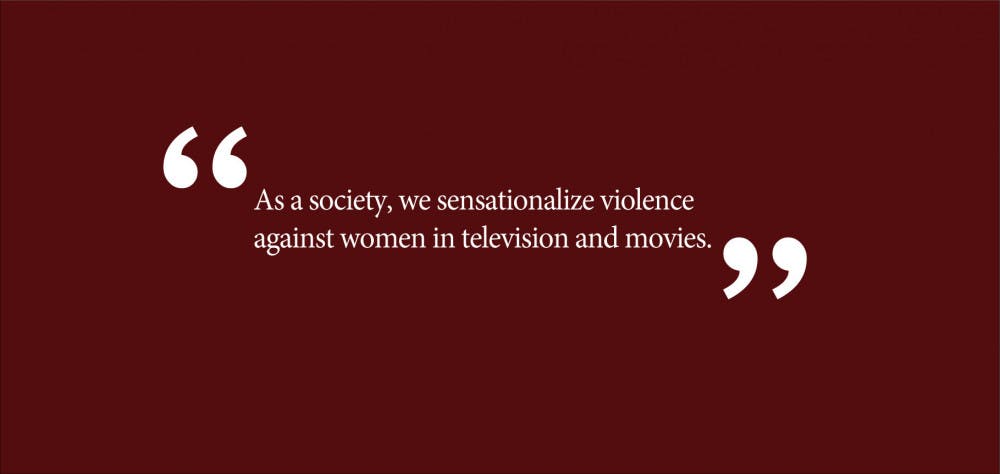In high school, I watched Law and Order: Special Victims Unit compulsively. I distinctly remember waiting for a new season to be released on Netflix with a sense of joyous anticipation. Perhaps it was the suspenseful introduction that got me hooked, or maybe it was the formulaic plot, in which Detective Olivia Benson always manages to sniff out and catch the perp. Like many young women my age, I found the show addictive. And yet, when I took a step back and thought about what I was watching — harrowing storylines of sexual assault and violence against women — I could not help but feel uncomfortable, like I was an involuntary voyeur, and that my passive viewing of the show was somehow insensitive. This was all years before the #MeToo movement, which, among other things, brought problematic undertones in popular culture to light. But at the time, when I was a high school student talking about SVU with my friends, we seemed to agree: it was indeed strange that we all liked watching SVU so much.
I am certainly not saying that watching shows or movies depicting storylines of sexual violence is inherently condemnable. Television and film can be crucial tools in teaching viewers about the unfortunate realities of the world in which we live. I am also not suggesting that people should stop watching SVU altogether. Roxane Gay, author of “Bad Feminist,” makes an interesting argument supporting SVU. She argues that it gives young women hope by showing that “justice … can exist within the realm of possibility.” Women on the show are always listened to by the detectives. Their voices are heard. Justice is served.
The ironic air of optimism in these episodic storylines can be encouraging and validating, but it is also largely inaccurate. The perfect justice system depicted by SVU is no more a reality than a world in which sexual assault does not exist at all. To put it in context, a mere 0.7 percent of all rape cases lead to felony convictions. Of cases reported to the police, only 2 percent of perpetrators face incarceration. For many without personal experiences with the justice system, that number seems staggeringly low, in part because shows like SVU give us a skewed perspective of responsiveness to sexual assault. At the very least, we should be watching SVU with an awareness of its inaccuracy. The show represents a best-case response to atrocity, one that we should strive to attain, but that is unfortunately not the reality of the present-day justice system.
In that same vein, it is important to acknowledge the incompleteness of the SVU story arc. In the show, nearly every episode ends with the conviction of the perpetrator. With that comes a feeling of relief and a sense that the story is … well … over. But as many know either from personal experiences with sexual violence or from the experiences of others, the story is far from over for the survivor. There is very little depiction in the show of how survivors are expected to return to their normal day-to-day lives, work a job, raise a family, be happy. For survivors of sexual violence, the risk of developing post-traumatic stress disorder is extremely high — well above 50 percent in the long-term. By simply ending the episode with the arrest of the perp, the storyline highlights the assaulter instead of the victim, and implies that a conviction can eliminate trauma.
There is also no universal response to trauma. Though the show aims to be diverse in the types of victims it showcases and the circumstances it places them in, it is certainly not exhaustive in portraying the multiplicity of a survivor’s potential responses to sexual violence. This may risk making viewers who have experienced sexual violence themselves feel as though their own reactions and coping mechanisms are abnormal.
I do not aim to only criticize SVU: the show is part of a larger trend of sensationalizing sexual violence. Even “Extremely Wicked, Shockingly Evil and Vile,” the Ted Bundy movie that was shown on Brown’s campus last spring, had a way of glamorizing violence against women. Casting Zac Efron, a former Disney Channel star and Hollywood heartthrob, as a well-known serial killer felt eerily like romanticizing atrocity. The movie also left out a lot of the gruesome aspects of Bundy’s behavior, instead focusing on his extremely likeable public appearance. I doubt that I was alone in leaving the screening wanting to have seen more of the wicked, evil and vile.
As a society, we sensationalize violence against women in television and movies, and I caution against the normalization of this trend. But there is hope for change. Netflix’s new crime series, “Unbelievable,” depicts the same heinous crimes as SVU but intentionally shows how the victims are often disbelieved during police investigations. I am optimistic that the release of “Unbelievable” is representative of a cultural shift in the way we generally understand sexual violence and depict it in media. Despite their flaws, shows like SVU still have their place. I now understand why I found the series so undeniably attractive in high school: It creates a world in which women’s voices are validated. Nonetheless, we need to better acknowledge that reality is far more convoluted.
Anna B. Kramer ’20 can be reached at anna_kramer@brown.edu. Please send responses to this opinion to letters@browndailyherald.com and op-eds to opinions@browndailyherald.





